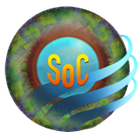
Welcome to the School of Commoning!
The School of Commoning is a growing worldwide community of people participating in the global and local commons. We support the developing commons movement, as well as interested organizations and individuals, with well-organized knowledge resources and educational programs on commoning and the commons.
- CLICK HERE TO REGISTER.
- Under "Username" enter your Full Name (first name + family name), as opposed to a nickname or fantasy name.
- Enter your email and a memorable password
- Click "Create Account"
- Your details will now be registered and you will be able to login with them
- On the homepage, click on "If you are new to the site", which will take you to a page of useful information about the site, which we compiled especially for new members.
- If you have any problems with registering, visit the Help page or contact our web admin.

